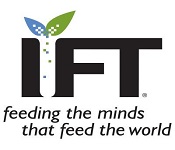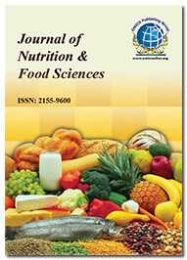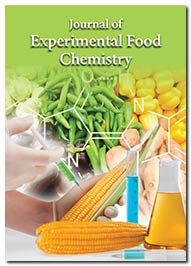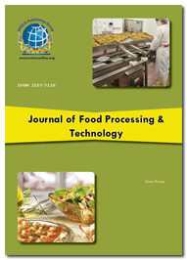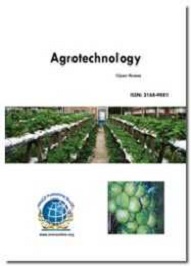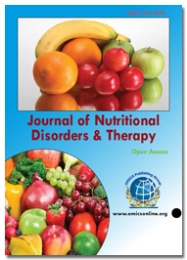Theme: Recent Advancement and Progress in the field of Food Chemistry and Hydrocolloids
Food Chemistry 2016
Conference Series LLC is a renowned organization that organizes highly notable Food Conferences throughout the globe. Conference series LLC is currently bringing forth “International Conference on Food Chemistry and Hydrocolloids" slated on August 11-12, 2016 in Toronto, Canada.
This Food science event will bring together practitioners, industrialists, researchers and educators from around the world who are engaged in the fields of indigenous food products, functional foods, bioactive ingredients, nutritional factors, traditional and alternative medicine, and dietary management. The Food Conference will highlight significant developments in research and innovations in agricultural, food, nutritional, pharmaceutical and medical technologies, with an emphasis on health and wellness.
This Conference on Food Science will feature a series of presentations and discussions in plenary, concurrent and poster sessions, informal gatherings, and exhibitions.
These food and beverage meetings are perfect platform to share experience, foster collaborations across industry and academia, and evaluate emerging technologies across the globe.
Track 1: Chemistry of Food
Food chemistry is the study of the chemical composition, processes and interactions of all biological and non-biological components of foods. It includes macro- and micronutrients, and the essential nutritional factors that determine the nutritional and energy value of food raw materials and foods. It also includes reactions related to amino acids, peptides and proteins, fats and other lipids, carbohydrates, vitamins, mineral substances and water which are responsible for odour, taste and colour that determine the quality of food materials and foods. In this food chemistry event we will mainly focus on the outcomes.
Related: Food Conferences | Food science Conferences| Hydrocolloid conferences| Food Chemistry Conferences |ConferenceSeries Ltd
7th International Crop Science Congress, August 14-19, 2016 in Beijing, China; FOP 2016 — 4th International Conference on Food Oral Processing, 03 -06 Jul 2016, Lausanne, Switzerland;, Spain; International Palm Oil Conference , 20 Apr -22 Apr 2016, Medan, Indonesia;2nd Food Structure and Functionality Forum Symposium, 28-02 March 2016, Singapore; 11th Global Summit on Food & Beverages September 22-24, 2016 Las Vegas, USA , Reinventing the Food and Beverage Industry, May 9-10, 2016, New Orleans, USA;, London, International Conference on Food Microbiology August 08-10, 2016, UK; 2nd International Conference on Food and Beverage Packaging, June 13-14, 2016, Rome, Italy; 9th Euro-Global Summit on Food & Beverages, July 11-13, 2016, Cologne, Germany; 2nd International Conference on Food Safety and Regulatory Measures June 06-08, 2016;, Birmingham, UK ; 10th Global Food Processing Summit, December 05-07 , 2016 San Antonio, USA
Related societies, associations and agencies:
World Apple and Pear Association, Belgium; Wisconsin Restaurant Association Education Foundation, Wisconsin; Wisconsin Restaurant Association, Wisconsin;United States Department of Agriculture (USDA), USA; United States Brewers' Association, USA;UK Government Decontamination Service, UK; U.S. Poultry & Egg Association, USA
Track 2: Behaviour of Hydrocolloids
Hydrocolloids or gums are a diverse group of long chain polymers characterized by their property of forming viscous dispersions and/or gels when dispersed in water. They produce a dispersion, which is intermediate between a true solution and a suspension, and exhibits the properties of a colloid. Considering these properties, they are appropriately termed as ‘hydrophilic colloids’ or ‘hydrocolloids’. Hydrocolloids have a wide array of functional properties in foods including thickening, gelling, emulsifying, stabilization, coating and etc.. The primary reason behind the ample use of hydrocolloids in foods is their ability to modify the rheology of food systems. This includes two basic properties of food systems that is, flow behaviour (viscosity) and mechanical solid property (texture). The modification of texture and/or viscosity of food systems help modify its sensory properties, therefore hydrocolloids are used as significant food additives to perform specific purposes.
Related: Food Conferences | Food science Conferences| Hydrocolloid conferences| Food Chemistry Conferences|ConferenceSeries Ltd
The 13th International Hydrocolloids Conference, May 16-20, 2016,Guelph, Ontario, Canada; The 2nd International Conference on Natural Food Hydrocolloids, September 14th – 15th ,2016 , Mashhad-Iran;3rd International Conference on BioTribology - ICoBT 2016, 11 - 14 September 2016,London, UK;13th Global Food Manufacturing Conference, October 20-22, 2016 Kuala Lumpur, Malaysia; 11th Global Summit on Food & Beverages September 22-24, 2016 Las Vegas, USA , Reinventing the Food and Beverage Industry, May 9-10, 2016, New Orleans, USA;, London, International Conference on Food Microbiology August 08-10, 2016, UK; 2nd International Conference on Food and Beverage Packaging, June 13-14, 2016, Rome, Italy; 9th Euro-Global Summit on Food & Beverages, July 11-13, 2016, Cologne, Germany; 2nd International Conference on Food Safety and Regulatory Measures June 06-08, 2016;, Birmingham, UK ; 10th Global Food Processing Summit, December 05-07 , 2016 San Antonio, USA
Related societies, associations and agencies:
The Washington Restaurant Association, USA; Netherlands Nutrition Centre, Netherlands; Specialty Wine Retailers Association, USA; Specialty Food Association, USA; Specialty Coffee Association of Indonesia, Indonesia; Southern Hemisphere Association of Fresh Fruit Exporters, Belgium
Track 3: Food Flavor Chemistry
Year by year, more and more of the food we eat is processed - canned, frozen, dehydrated, smoked, or otherwise treated so that it can be conserved. Consumers are already well aware of the importance of retaining the vitamin content in stored and processed foods. But now it is beginning to demand similar progress toward making these foods more palatable by incorporating flavor chemistry in food science.
As a result, research programs are being set up with the sole objective of studying one of the most important constituents of our daily food-flavor. Plant physiologists, agricultural scientists, food industries, nutritionists, and medical workers are engaged in this work. They mean to find out what processes are involved in food ripening, how flavor is formed, how it behaves during processing, how it stands up 'under storage and marketing conditions, and how it can be improved.
Related: Food Conferences | Food science Conferences| Hydrocolloid conferences| Food Chemistry Conferences|ConferenceSeries Ltd
1st Congress On Food Structure Design , 15-17 October, 2016 Porto-Portugal; 2nd Food Structure and Functionality Forum Symposium – from Molecules to Functionality, February 28 - March 2, 2016, Singapore; Authenticity of Oils, April 10-12, 2016, Nürnberg, Germany; 2nd International Conference on Food analysis ICFP2016, May 29 - June 2, 2016 Bangkok, Thailand; 4th International ISEKI Food Conference, July 6-8, 2016, Vienna, Austria; 11th Global Summit on Food & Beverages September 22-24, 2016 Las Vegas, USA , Reinventing the Food and Beverage Industry, May 9-10, 2016, New Orleans, USA;, London, International Conference on Food Microbiology August 08-10, 2016, UK; 2nd International Conference on Food and Beverage Packaging, June 13-14, 2016, Rome, Italy; 9th Euro-Global Summit on Food & Beverages, July 11-13, 2016, Cologne, Germany; 2nd International Conference on Food Safety and Regulatory Measures June 06-08, 2016;, Birmingham, UK ; 10th Global Food Processing Summit, December 05-07 , 2016 San Antonio, USA
Related societies, associations and agencies:
Scotland Food & Drink, Scotland; SAFE FOODS, USA; Produce Marketing Association, Europe;Processed Vegetable Growers' Association, Australia; Potato Council, USA; Norwegian Ministry of Agriculture and Food Landbruks, Norwegian; Norwegian Food Safety Authority Mattilsynet, Norwegian
Track 4: Hydrophilic Colloids in Food Industry
Food hydrocolloids have been widely used in the food industry for their gelling, thickening, emulsifying, dispersing, and stabilizing functions. Food hydrocolloids control the texture and at the same time they control flavour and aroma release which has also been studied extensively. Methods of investigation are very diverse ranging from physics to biological chemistry, and it is necessary for workers in this field to learn various methods. Collaboration between academia and industry is necessary to further develop understanding and application of food hydrocolloids. The viewpoints of both unity and diversity are necessary for the study of food hydrocolloids. The food hydrocolloids approach proposes that these hydrocolloids can be studied from a unified viewpoint: all these dispersed systems are colloidal systems consisting of water, polysaccharides, proteins, lipids and other ingredients. Hydrocolloids in this context include polysaccharides, modified polysaccharides and proteins acting alone, or in mixture with other food components, as thickening agents, gelling agents or surface acting agents. The scope of the study was to exploit the real and model food colloids, dispersions, emulsions, and forms and the associated physicochemical stability phenomena, creaming, sedimentation, flocculation and coalescence.
Related: Food Conferences | Food science Conferences| Hydrocolloid conferences| Food Chemistry Conferences|ConferenceSeries Ltd
International Conference on Advanced Nanoscience and Nanotechnology, 07 -11 Feb 2016, Canberra, Australia; International Nanotechnology Conference and Expo, April 04, 2016 - April 06, 2016;The 13th International Hydrocolloids Conference, May 16-20, 2016, Guelph, Ontario, Canada; 11th Global Summit on Food & Beverages September 22-24, 2016 Las Vegas, USA , Reinventing the Food and Beverage Industry, May 9-10, 2016, New Orleans, USA;, London, International Conference on Food Microbiology August 08-10, 2016, UK; 2nd International Conference on Food and Beverage Packaging, June 13-14, 2016, Rome, Italy; 9th Euro-Global Summit on Food & Beverages, July 11-13, 2016, Cologne, Germany; 2nd International Conference on Food Safety and Regulatory Measures June 06-08, 2016;, Birmingham, UK ; 10th Global Food Processing Summit, December 05-07 , 2016 San Antonio, USA
Related societies, associations and agencies:
North American Olive Oil Association, USA; North American Meat Processors Association, USA;North American Meat Institute, USA; New Zealand Food Safety Authority, New Zealand;New South Wales Food Authority, New South Wales; Natural Products Association, Europe;National Yogurt Association, Europe; National Turkey Federation, USA; National Restaurant Association, USA; National Registry of Food Safety Professionals, Canada
Track 5: Sea Food and Staple Food
A staple food is one that is eaten regularly and in such quantities as to constitute the dominant part of the diet and supply a major proportion of energy and nutrient needs. A staple food does not meet a population's total nutritional needs: a variety of foods is required. This is particularly the case for children and other nutritionally vulnerable groups. Typically, staple foods are well adapted to the growth conditions in their source areas. For example, they may be tolerant of drought, pests or soils low in nutrients. Farmers often rely on staple crops to reduce risk and increase the resilience of their agricultural systems. Most people live on a diet based on one or more of the following staples: rice, wheat, maize (corn), millet, sorghum, roots and tubers (potatoes, cassava, yams and taro), and animal products such as meat, milk, eggs, cheese and fish.
Seafood as a whole food is highly nutritious. Benefits to human health associated with the consumption of seafood are noted for multiple bodily organs and physiological functions. Seafood compares favourably with other protein sources as it offers superior macronutrients in the ideal form of lean proteins combined with healthy omega-3 long chain polyunsaturated fatty acids (n-3 LCPUFAs),and a wide array of highly bioavailable micronutrients.
Related: Food Conferences | Food science Conferences| Hydrocolloid conferences| Food Chemistry Conferences|ConferenceSeries Ltd
FoodMicro 2016, Dublin, Ireland, 19th – 22nd July, 2016;Microbe 2016, June 16–20, Boston, 2016; 18th International Conference on Molecular Genetics and Microbiology, February 25 - 26, 2016, London, United Kingdom; 18th IUFoST – World Congress of Food Science and Technology, between 21st – 25th August 2016, Dublin, Ohio, USA; Summer Conference 2016, 4 - 7 July 2016, Assembly Rooms, Edinburgh; 11th Global Summit on Food & Beverages September 22-24, 2016 Las Vegas, USA , Reinventing the Food and Beverage Industry, May 9-10, 2016, New Orleans, USA;, London, International Conference on Food Microbiology August 08-10, 2016, UK; 2nd International Conference on Food and Beverage Packaging, June 13-14, 2016, Rome, Italy; 9th Euro-Global Summit on Food & Beverages, July 11-13, 2016, Cologne, Germany; 2nd International Conference on Food Safety and Regulatory Measures June 06-08, 2016;, Birmingham, UK ; 10th Global Food Processing Summit, December 05-07 , 2016 San Antonio, USA
Related societies, associations and agencies:
National Hot Dog and Sausage Council , USA; National Frozen & Refrigerated Foods Association; National Food Safety and Quality Service (SENASA) , Australia; National Confectioners Association, USA; National Cattlemen's Beef Association, Germany; Mutton Renaissance Campaign; Montana Stock growers Association
Track 6: Food Microbiology and Impact of Water on Food
Water (moisture) is the predominant constituent in many foods. As medium water supports chemical reactions, and it is a direct reactant in hydrolytic processes. Therefore, removal of water from food or binding it by increasing the concentration of common salt or sugar retards many reactions and inhibits the growth of microorganisms, thus improving the shelf lives of a number of foods. Through physical interaction with proteins, polysaccharides, lipids and salts, water contributes significantly to the texture of food.
Related: Food Conferences | Food science Conferences| Hydrocolloid conferences| Food Chemistry Conferences|ConferenceSeries Ltd
FoodMicro 2016, Dublin, Ireland, 19th – 22nd July, 2016, Microbe 2016, June 16–20, 2016, Boston, 2016: 18th International Conference on Molecular Genetics and Microbiology, February 25 - 26, London, United Kingdom, 2016; 18th IUFoST – World Congress of Food Science and Technology, between 21st – 25th August 2016, Dublin, Ohio, USA, Summer Conference 2016, 4 - 7 July 2016, Assembly Rooms, Edinburgh, 11th Global Summit on Food & Beverages September 22-24, 2016 Las Vegas, USA ; Reinventing the Food and Beverage Industry, May 9-10, 2016, New Orleans, USA; London, International Conference on Food Microbiology August 08-10, 2016, UK; 2nd International Conference on Food and Beverage Packaging, June 13-14, 2016, Rome, Italy; 9th Euro-Global Summit on Food & Beverages, July 11-13, 2016, Cologne, Germany; 2nd International Conference on Food Safety and Regulatory Measures June 06-08, 2016;, Birmingham, UK ; 10th Global Food Processing Summit, December 05-07 , 2016 San Antonio, USA
Related societies, associations and agencies:
Melton Mowbray Pork Pie Association, USA; Meat Industry Association of New Zealandm, New Zealand; Local Authority Caterers Association, USA; Juice Products Association, Belgium; Joint Expert Committee on Food Additives (JECFA)
Track 7: Rheology of Food and Kinetics of Chemical Reaction in Food
Food rheology is the study of the rheological properties of food, that is, the consistency and flow of food under tightly specified conditions. The consistency, degree of fluidity, and other mechanical properties are important in understanding how long food can be stored, how stable it will remain, and in determining food texture. The acceptability of food products to the consumer is often determined by food texture, such as how spreadable and creamy a food product is. Food rheology is important in quality control during food manufacture and processing. Food rheology terms have been noted since ancient times.
Multiple chemical reactions take place in food. While some reactions are necessary to produce the compound responsible for flavour texture and nutritional quality, others results in spoilage and undesirable, harmful substances. Chemical reaction occurs when sufficient energy is brought to the molecules of one or several compounds in proximity of each other, producing collisions that result in breakage or formation of bonds among the atoms in those molecules. Chemical kinetics studies the rate at which chemical reactions take place and establishes mathematical relationship and mechanisms describing such phenomena.
Related: Food Conferences | Food science Conferences| Hydrocolloid conferences| Food Chemistry Conferences|ConferenceSeries Ltd
XIV International Conference on Food Security and Nutrition, February 7-8, 2016 , Cologne, Germany;107th American Oil Chemists Society Annual Meeting, May 1-4, 2016, Salt Lake City, Utah;4th International ISEKI (European Association for Integrating Food Science and Engineering Knowledge Into the Food Chains)Food Conference , July 6-8, 2016, Vienna, Austria;2016 International Conference on Food Studies - A Common Ground Conference, October 12-13, 2016, Berkeley, CA; 11th Global Summit on Food & Beverages September 22-24, 2016 Las Vegas, USA , Reinventing the Food and Beverage Industry, May 9-10, 2016, New Orleans, USA;, London, International Conference on Food Microbiology August 08-10, 2016, UK; 2nd International Conference on Food and Beverage Packaging, June 13-14, 2016, Rome, Italy; 9th Euro-Global Summit on Food & Beverages, July 11-13, 2016, Cologne, Germany; 2nd International Conference on Food Safety and Regulatory Measures June 06-08, 2016;, Birmingham, UK ; 10th Global Food Processing Summit, December 05-07 , 2016 San Antonio, USA
Related societies, associations and agencies:
International Dairy-Deli-Bakery Association, USA; International Bottled Water Association, USA; International Association of Operative Millers, Italy; International Association of Engineering and Food; Idaho Potato Commission, Idaho; Hong Kong SAR, Hong Kong; Guild of Bangladeshi Restaurateurs, Bangladesh; Guelph Food Technology Centre, Canada
Track 8: Food Storage and Preservation
Food preservation usually involves preventing the growth of bacteria, fungi (such as yeasts), or other micro-organisms (although some methods work by introducing bacteria or fungi to the food), as well as retarding the oxidation of fats that cause rancidity. Food preservation may also include processes that inhibit visual deterioration, many processes designed to preserve food involves a number of food preservation methods. Some traditional methods of preserving food have been shown to have a lower energy input and carbon footprint, when compared to modern methods Maintaining or creating nutritional value, texture and flavor is an important aspect of food preservation, although, historically, some methods drastically altered the character of the food being preserved. In many cases these changes have come to be seen as desirable qualities
Food logistics is both a traditional domestic skill and is important industrially. Transport and storing of food as well as timely delivery to consumers is important in order to secure the procurement of food. Food is stored by almost every human society and by many animals.
Related: Food Conferences | Food science Conferences| Hydrocolloid conferences| Food Chemistry Conferences|ConferenceSeries Ltd
Food Analysis Congress: Safety, Quality, Novel Technologies, 29-30 October 2014 Barcelona, Spain;4th annual Global Food and Beverage Packaging Summit, July 12-13, 2016 ,Chicago, IL;5th Global Feed and Food Congress (GFFC ) 18-20 April 2016, Antalya, Turkey; 11th Global Summit on Food & Beverages September 22-24, 2016 Las Vegas, USA , Reinventing the Food and Beverage Industry, May 9-10, 2016, New Orleans, USA;, London, International Conference on Food Microbiology August 08-10, 2016, UK; 2nd International Conference on Food and Beverage Packaging, June 13-14, 2016, Rome, Italy; 9th Euro-Global Summit on Food & Beverages, July 11-13, 2016, Cologne, Germany; 2nd International Conference on Food Safety and Regulatory Measures June 06-08, 2016;, Birmingham, UK ; 10th Global Food Processing Summit, December 05-07 , 2016 San Antonio, USA
Related societies, associations and agencies:
Grocery Manufacturers Association, USA; Grain and Feed Trade Association, Canada; Freshfel Europe, Europe; Food Drink Europe, Europe; Food Standards Australia New Zealand (FSANZ); Food Products Association
Track 9: Food, Nutrition and Health
Nutrition is the science that interprets the interaction of nutrients and other substances in food (e.g. phytonutrients, anthocyanins, tannins, etc.) in relation to maintenance, growth, reproduction, health and disease of an organism. It includes food intake, absorption, assimilation, biosynthesis, catabolism and excretion. The diet of an organism is what it eats, which is largely determined by the availability, processing and palatability of foods. A healthy diet includes preparation of food and storage methods that preserve nutrients from oxidation, heat or leaching, and that reduce risk of food-borne illnesses. A poor diet may have an injurious impact on health, causing deficiency diseases such as blindness, anaemia, scurvy, preterm birth, stillbirth and cretinism; health-threatening conditions like obesity and metabolic syndrome; and such common chronic systemic diseases as cardiovascular disease, diabetes, and osteoporosis.
Related: Food Conferences | Food science Conferences| Hydrocolloid conferences| Food Chemistry Conferences|ConferenceSeries Ltd
4th International Symposium on Gluten-Free Food Products and Beverages June 1, 2016, Alberta, Canada; ICPA 2016: 18th International Conference on Pharmacovigilance and Antibiotics, Amsterdam, May 12 - 13, 2016, The Netherlands; Authenticity of Oils, April 10-12, 2016, Nurnberg, Germany;4th International Conference and Exhibition on Nutrition; 11th Global Summit on Food & Beverages September 22-24, 2016 Las Vegas, USA , Reinventing the Food and Beverage Industry, May 9-10, 2016, New Orleans, USA;, London, International Conference on Food Microbiology August 08-10, 2016, UK; 2nd International Conference on Food and Beverage Packaging, June 13-14, 2016, Rome, Italy; 9th Euro-Global Summit on Food & Beverages, July 11-13, 2016, Cologne, Germany; 2nd International Conference on Food Safety and Regulatory Measures June 06-08, 2016;, Birmingham, UK ; 10th Global Food Processing Summit, December 05-07 , 2016 San Antonio, USA
Related societies, associations and agencies:
Food and Drink Federation; Florida Citrus Mutual, USA; Federation of Oils, Seeds and Fats Associations, Australia; European Food Safety Authority, Europe
Track 10: Food Structure and Functionality
A food property characterizes the structure, quality, nutritional value, and/or acceptability of a food product. A food functional property is determined by physical, chemical, and/or organoleptic properties of a food. Examples of a functional property may include solubility, absorption, water retention, frothing ability, elasticity, and absorptive capacity for fats and foreign particles. Different foods have different working properties when treated in certain ways or combined with other foods.
Related: Food Conferences | Food science Conferences| Hydrocolloid conferences| Food Chemistry Conferences|ConferenceSeries Ltd
18th International Conference on Chemistry and Chemical Engineering, , May 12 - 13, 2016, Amsterdam, the Netherlands; XIV International Conference on Food Security and Nutrition, February 7-8, 2016,Cologne, Germany;107th American Oil Chemists Society Annual Meeting, May 1-4, 2016, Salt Lake City, Utah; 4th International ISEKI Food Conference , July 6-8, 2016, Vienna, Austria;2016 International Conference on Food Studies - A Common Ground Conference, October 12-13, 2016, Berkeley, CA; 11th Global Summit on Food & Beverages September 22-24, 2016 Las Vegas, USA , Reinventing the Food and Beverage Industry, May 9-10, 2016, New Orleans, USA;, London, International Conference on Food Microbiology August 08-10, 2016, UK; 2nd International Conference on Food and Beverage Packaging, June 13-14, 2016, Rome, Italy; 9th Euro-Global Summit on Food & Beverages, July 11-13, 2016, Cologne, Germany; 2nd International Conference on Food Safety and Regulatory Measures June 06-08, 2016;, Birmingham, UK ; 10th Global Food Processing Summit, December 05-07 , 2016 San Antonio, USA
Related societies, associations and agencies:
Cornish Pasty Association; Committee on the Environment, Public Health and Food Safety (EU); Catalan Food Safety Agency, USA; Canadian Restaurant and Foodservices Association, Canada
Track 11: Bioactive Constituents
"Bioactive compounds" are extra nutritional constituents that typically occur in small quantities in foods. They are being intensively studied to evaluate their effects on health. The impetus sparking this scientific inquiry was the result of many epidemiologic studies that have shown protective effects of plant-based diets on cardiovascular disease (CVD) and cancer. Many bioactive compounds have been discovered. These compounds vary widely in chemical structure and function and are grouped accordingly. Phenolic compounds, including their subcategory, flavonoids, are present in all plants and have been studied extensively in cereals, legumes, nuts, olive oil, vegetables, fruits, tea, and red wine. Many phenolic compounds have antioxidant properties.
Related: Food Conferences | Food science Conferences| Hydrocolloid conferences| Food Chemistry Conferences|ConferenceSeries Ltd
International Conference on Food Studies - A Common Ground Conference, 12th to 13th October 2016, Berkeley, California, United States of America; FOP 2016 — 4th International Conference on Food Oral Processing, 03 -06 Jul 2016, Lausanne, Switzerland; 20 Apr -22 Apr 2016, Medan, Indonesia;2nd Food Structure and Functionality Forum Symposium, 28-02 March 2016, Singapore; 11th Global Summit on Food & Beverages September 22-24, 2016 Las Vegas, USA , Reinventing the Food and Beverage Industry, May 9-10, 2016, New Orleans, USA;, London, International Conference on Food Microbiology August 08-10, 2016, UK; 2nd International Conference on Food and Beverage Packaging, June 13-14, 2016, Rome, Italy; 9th Euro-Global Summit on Food & Beverages, July 11-13, 2016, Cologne, Germany; 2nd International Conference on Food Safety and Regulatory Measures June 06-08, 2016;, Birmingham, UK ; 10th Global Food Processing Summit, December 05-07 , 2016 San Antonio, USA
Related societies, associations and agencies:
Canadian Meat Council, Canada; Canadian Cattlemen's Association, Canada; California Beer and Beverage Distributors, USA; California Avocado Society, USA; British Sandwich Association , UK; Bread Bakers Guild of America, USA; Biosecurity Australia, Australia; Australian Quarantine and Inspection Service (AQIS), Australia; Australian Food and Grocery Council, Australia
Track 12: Processing, Fortification and Packaging of Food
Food fortification or enrichment is the process of adding micronutrients (essential trace elements and vitamins) to food. It may be a purely commercial choice to provide extra nutrients in a food, while other times it is a public health policy which aims to reduce the number of people with dietary deficiencies within a population. Diets that lack variety can be deficient in certain nutrients. Sometimes the staple foods of a region can lack particular nutrients, due to the soil of the region or because of the inherent inadequacy of the normal diet. Addition of micronutrients to staples and condiments can prevent large-scale deficiency diseases in these cases.
Food processing is the transformation of raw ingredients, by physical or chemical means into food, or of food into other forms. Food processing combines raw food ingredients to produce marketable food products that can be easily prepared and served by the consumer. Benefits of food processing include toxin removal, preservation, easing marketing and distribution tasks, and increasing food consistency. In addition, it increases yearly availability of many foods, enables transportation of delicate perishable foods across long distances and makes many kinds of foods safe to eat by de-activating spoilage and pathogenic micro-organisms.
Related: Food Conferences | Food science Conferences| Hydrocolloid conferences| Food Chemistry Conferences|ConferenceSeries Ltd
1st Congress On Food Structure Design , 15-17 October, 2016 Porto-Portugal;2nd Food Structure and Functionality Forum Symposium – from Molecules to Functionality, February 28 - March 2, 2016, Singapore; Authenticity of Oils, April 10-12, 2016, Nürnberg , Germany;2nd International Conference on Food Properties (ICFP2016, May 29 - June 2, 2016 Bangkok, Thailand; 4th International ISEKI Food Conference, July 6-8, 2016, Vienna, Austria; 11th Global Summit on Food & Beverages September 22-24, 2016 Las Vegas, USA , Reinventing the Food and Beverage Industry, May 9-10, 2016, New Orleans, USA;, London, International Conference on Food Microbiology August 08-10, 2016, UK; 2nd International Conference on Food and Beverage Packaging, June 13-14, 2016, Rome, Italy; 9th Euro-Global Summit on Food & Beverages, July 11-13, 2016, Cologne, Germany; 2nd International Conference on Food Safety and Regulatory Measures June 06-08, 2016;, Birmingham, UK ; 10th Global Food Processing Summit, December 05-07 , 2016 San Antonio, USA
Related societies, associations and agencies:
Bread Bakers Guild of America, USA; Biosecurity Australia, Australia; Australian Quarantine and Inspection Service (AQIS), Australia; Australian Food and Grocery Council, Australia; American Mushroom Institute, USA; American Frozen Food Institute , USA; American Cheese Society , USA; Agriculture and Agri-Food Canada, Canada
Track 13: Recent Advancement in Food Science
As the economies of many countries are increasing, the consumers have started using processed food more than the staples. As a matter of fact global food processing and packaging business has reached to multi trillion dollars. It was reported that approximately, 16 million people work in the food industry. Recent advances in food processing and packaging is not just to meet the productivity demands but to adopt sophisticated automation, control and monitoring methods and techniques. There are many significant amounts of processing and packaging research and developments which involve study of automation, control and monitoring
Related: Food Conferences | Food science Conferences| Hydrocolloid conferences| Food Chemistry Conferences|ConferenceSeries Ltd
Agribusiness 2016 11 November 2016, East of England Showground, Peterborough; AGRI INTEX – the International Agricultural Technology Exhibition, Coimbatore, Tamil Nadu, India, 15 - 18 JULY 2016;7th International Conference on Localized Agri-food Systems, 8-10 of May 2016, Stockholm , Sweden;2016 NORTHERN AUSTRALIAN FOOD FUTURES CONFERENCE, 11 - 13 APRIL 2016, DARWIN; 11th Global Summit on Food & Beverages September 22-24, 2016 Las Vegas, USA , Reinventing the Food and Beverage Industry, May 9-10, 2016, New Orleans, USA;, London, International Conference on Food Microbiology August 08-10, 2016, UK; 2nd International Conference on Food and Beverage Packaging, June 13-14, 2016, Rome, Italy; 9th Euro-Global Summit on Food & Beverages, July 11-13, 2016, Cologne, Germany; 2nd International Conference on Food Safety and Regulatory Measures June 06-08, 2016;, Birmingham, UK ; 10th Global Food Processing Summit, December 05-07 , 2016 San Antonio, USA
Related societies, associations and agencies:
Canadian Restaurant and Foodservices Association, Canada; Canadian Meat Council, Canada; Canadian Cattlemen's Association, Canada; California Beer and Beverage Distributors, USA; California Avocado Society, USA; British Sandwich Association, UK
Track 14: Equipment’s and Techniques
Food processing equipment’s and latest techniques that are being used in the field of Food science and technology along with food industries and the study about the principles, operation and maintenance of food processing equipment’s.
Related: Food Conferences | Food science Conferences| Hydrocolloid conferences| Food Chemistry Conferences|ConferenceSeries Ltd
ICFEHRT 2016: 18th International Conference on Fencing Equipment, History, Rules and Techniques, August 4 - 5, 2016, Amsterdam, The Netherlands; Annual IIAR Industrial Refrigeration Conference and Exhibition, March 20-23, 2016, Orlando, FL; 32nd European Conference on Acoustic Emission Testing, September 07th - 09th, 2016, Czech Republic, Prague;2016 ASHRAE Winter Conference, January 23 - 27, 2016, Orlando, FL, USA.; International Conference on Ultrafast Phenomena, 17 -22 Jul 2016, Santa Fe, United States; 11th Global Summit on Food & Beverages September 22-24, 2016 Las Vegas, USA , Reinventing the Food and Beverage Industry, May 9-10, 2016, New Orleans, USA;, London, International Conference on Food Microbiology August 08-10, 2016, UK; 2nd International Conference on Food and Beverage Packaging, June 13-14, 2016, Rome, Italy; 9th Euro-Global Summit on Food & Beverages, July 11-13, 2016, Cologne, Germany; 2nd International Conference on Food Safety and Regulatory Measures June 06-08, 2016;, Birmingham, UK ; 10th Global Food Processing Summit, December 05-07 , 2016 San Antonio, USA
Related societies, associations and agencies:
Canadian Meat Council, Canada; Canadian Cattlemen's Association, Canada; California Beer and Beverage Distributors, USA; California Avocado Society, USA; British Sandwich Association , UK;Bread Bakers Guild of America, USA; Biosecurity Australia, Australia; Australian Quarantine and Inspection Service (AQIS), Australia; Australian Food and Grocery Council, Australia
Track 15: Food Dairy: Science, Research & Sustainability
Food Dairy science mainly focuses on the application of biological and chemical principles to the production, management and handling of dairy products.
Related: Food Conferences | Food science Conferences| Hydrocolloid conferences| Food Chemistry Conferences|ConferenceSeries Ltd
International Dairy Show, April 4-6, 2017, Chicago, IL; International Life Sciences Institute Annual Meeting, January 22-27, 2016, St. Petersburg, FL; 2nd Food Structure and Functionality Forum Symposium – from Molecules to Functionality, 28 February – 2 March 2016, Singex, Singapore; IDF Symposium on Cheese Science and Technology and IDF Symposium on Technology and Spray Dried Dairy Products, 11-13th April, Dublin 2016;4th International Conference and Exhibition on Nutrition, October 26-28, 2016 Chicago, Illinois, USA; 11th Global Summit on Food & Beverages September 22-24, 2016 Las Vegas, USA , Reinventing the Food and Beverage Industry, May 9-10, 2016, New Orleans, USA;, London, International Conference on Food Microbiology August 08-10, 2016, UK; 2nd International Conference on Food and Beverage Packaging, June 13-14, 2016, Rome, Italy; 9th Euro-Global Summit on Food & Beverages, July 11-13, 2016, Cologne, Germany; 2nd International Conference on Food Safety and Regulatory Measures June 06-08, 2016;, Birmingham, UK ; 10th Global Food Processing Summit, December 05-07 , 2016 San Antonio, USA
Related societies, associations and agencies:
World Apple and Pear Association, Belgium; Wisconsin Restaurant Association Education Foundation, Wisconsin; Wisconsin Restaurant Association, Wisconsin; United States Brewers' Association, USA; UK Government Decontamination Service, UK; U.S. Poultry & Egg Association, USA
Track 16: Entrepreneurs Investment Meet
After three decades of declining relevance, food is once more at the center of the global agenda. To meet the demands of a growing global population, in the next 40 years alone the food and agriculture industry will need to generate outputs that are equivalent to its total production over the last 10 ,000. But increasing regulation and resource constraints are accelerating the level of uncertainty and volatility in the sector.
We have created a unique perspective on value creation pools and investment opportunities in food and agriculture. We bring this perspective to our work with private equity groups and financial investors—and to our work supporting industry players as they plan for strategic growth.

INTRODUCTION
The study of chemistry probably dates from the first millennium AD and the route to modern food chemistry can be traced through the alchemist philosophies of medieval China, India and Europe, although it took about a thousand years for chemistry to grow into a coherent and inclusive discipline. The marriage of chemistry and biology led to many progeny, including agricultural chemistry, biological chemistry, food chemistry, industrial chemistry and pharmaceutical chemistry.
Food Chemistry is an overview of chemistry related to food sciences, such as food analysis, microbiology, nutrition, and food engineering etc. Food chemistry deals with food and Sustenance. Now there are some emerging new trends in college education.There is increasing emphasis on improving learning and teaching (L&T) quality, measuring student based learning outcomes, and improving core competencies. Teaching loads for most faculties are increasing. All this points to a need for better efficiency. Perhaps through improved study skills, better teaching methods, and increased distance learning. After decades of teaching food chemistry it is noticeable that these trends bring with them constraints and challenges for the students, Researchers, Industrialists.
WHY CANADA?
Qualifications Valued Around the World
Canada’s high academic standards and rigorous quality controls mean that you’ll be earning a high-quality education that will open doors for your future and benefit your career over the long term. A Canadian degree, diploma or certificate is globally recognized.
Multicultural Society
With almost all of the world’s ethnic groups represented in Canada, it’s hard not to find ethnic foods and recreation activities associated with specific cultures. Student get in touch with number of ethnic clubs and associations related to Scientific Trades.
Since research is one of the key components of a Canadian post-secondary education,one have ample opportunity to become a part of this vibrant aspect of education. In Canada, government and industry together support research including: telecommunications, medicine, agriculture, computer technology, and environmental science.
Land of Possibilities
Under Canada’s highly dynamic and hands-on academic environment, Canada has become examples of excellence, innovation, and beauty, all of which—along with top-notch educational institutions—make Canada one of the leading study abroad destinations in the world. Canada is one of the study destinations which holds International reputation for educational standards. The country spends more on education (as a percentage of GDP) compared to the OECD average, and is the second highest among G-8 countries. Canada boasts a wide range of quality educational institutions for both degrees and diplomas in technical and professional disciplines. Over 1, 30,000 international students attend Canadian colleges and universities. Canada holds high international reputation for educational standard. The cost of living in Canada is lower than countries like Australia, England or the United States. Canada also offers post study work options to the eligible applicants.
Canadian Universities
Canadian universities are known for being consistently high quality and for offering internationally accepted degrees and credentials; some are ranked in the top 100 by reputable sources as The Times Higher Education Supplement and Shanghai Jiao Tong University’s Academic Ranking of World Universities.
Over 10,000 undergraduate and graduate degree programs are offered at more than 100 institutions nationwide—and, tuition is generally much lower than in other leading study abroad countries. Students can pursue their studies at one of Canada’s top universities for roughly half of what it would cost to attend an equally reputable program at a private US university.
International students can expect to be assisted in their university studies by such resources and services as orientation sessions, support programs, academic advising, prayer rooms, safe walk programs, student clubs, and assistance with medical concerns or housing issues.
International students can often work while they study, taking advantage of many cooperative education and internship opportunities. There are also immigration programs that international students may qualify for post-graduation.
The high quality of Canadian university education is further enabled by membership in the Association of Universities and Colleges of Canada (AUCC) and provincial government charters.
Conference City
Toronto's food and beverage cluster is of great importance to the region, and along with Chicago, New York and Los Angeles, is one of the largest food and beverage clusters on the continent.
The food processing sector has long been a major employment and economic driver of the Province of Ontario and the City of Toronto. The Food Innovation & Research Studio (FIRSt) at George Brown College guides its industry partners from concept to commercialization. Building on the College’s extensive culinary experience and success through its training, applied research and development activities, FIRSt blends food science and culinary arts to help industry innovate. FIRSt is a Technology Access Centre funded by the Government of Canada.
The support and establishment of an International Food Processing and Innovation Centre (IFPIC) (PDF) in Toronto is the answer to a need for available food-grade industrial space in the city.
Why to Attend this Conference?
Educational opportunities: No matter how experienced you are at your business, everyone can learn. Working in research projects or business venture one can often be isolating, and without exposure to a variety of points of view, we can miss new ideas and trends that can impact future results. The educational aspect this conference can expose you to new ways of conducting your business and help you discover how to be more productive.
Networking with peers: Food Chemistry 2016 conference will provide a great opportunity to network. Often competitors from other regions of the country can become valuable resources for referrals and best-practices. Avoiding peers for fear of others discovering your competitive advantage can actually limit your own success. Collaboration is the way to approach networking. While there are those whose intentions can be suspect, most people can help each other uncover ideas and spark inspiration when they get to know each other on a personal level.
Expand your Business: Food Chemistry 2016 is a place where you can learn more about the current business climate. Discovering innovative products and services for your business is necessary to stay competitive in today’s fast-paced world. Plus, these vendors who sell to your industry fully grasp what is happening inside your competition. Invest time with the sponsors at the event and turn them into your friends and allies.
Position yourself as an expert. When you are active in your research and industry, you can develop a reputation as an expert to your peers and your clients. Those who are engaged over the long term are often asked to speak at the events and to write articles for their publications. Like it or not, others like to associate with the experts in any field. Clients feel good about doing business with those that are celebrated by their peers. If your strategy is to be the best-kept secret in your business community and research area, you will be missing a valuable opportunity.
Have fun. Being in research or business should be rewarding and fun. All work and no play can get old fast. Food Chemistry 2016 conference can add a layer of enjoyment to managing your career growth by mixing a social aspect into your learning and industry branding efforts. Here we are to share our beautiful city, a destination where you can unwind and enjoy yourself as Toronto offers a premier locale situated in Southern Ontario on the north western shore of Lake Ontario near local shopping malls and is just a few miles from downtown parks, moreover August in the city does not disappoint, with major events every weekend. Taking an extra day at the beginning or end of the trip to explore or visit friends in the region is also a great way to maximize the investment in travel. Never underestimate the power of a little fun mixed with some interesting people!
Benefits of Food Chemistry 2016 conference
· Learn about the latest research in your field
· Grow as a researcher and presenter
· Obtain feedback on your research
· Meet and get to know your peers
· Gain visibility in your field
· Share your research findings with others in your field
· Regroup and rethink
· Stay on top of trends and topics
· Promote Creativity & Innovation in business field
Market Research
Canadian Dairy Research
There are a total of 23 research projects involving more than 100 scientists, from 15 institutions and 8 government research centres across the country. Some of the nation’s best dairy scientists trains more than 65 graduate students and post-doctoral fellows. The overall objective of this kind of program is to promote the efficiency and sustainability of Canadian dairy farms, grow markets and supply high quality, safe and nutritious dairy products to Canadians.
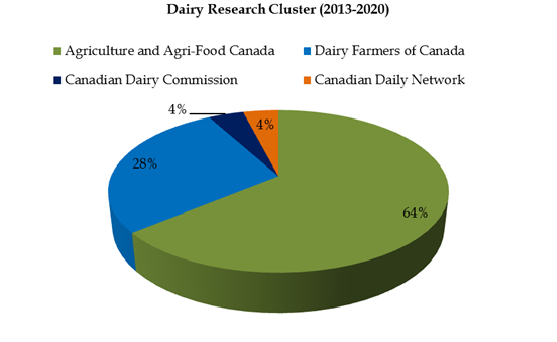
Growing Demand of Hydrocolloids (world consumption)
A growing interest in biodegradable polymers presents growth opportunities for starches. The fact that starches are derived from natural, renewable resources and can be used in the formulation of nontoxic, no irritating, biodegradable products is of increasing importance as manufacturers respond more directly to consumers' environmental awareness.
Between 2012 and 2018, the world average annual growth rate for hydrocolloid consumption is expected to be in the range of 4–5%. Within the developed countries of the world, hydrocolloid consumption growth will show maturity. Consumption growth in North America, Europe/Middle East/Africa, and Japan will be lower than the world average at 3%, 1% and –0.7%, respectively. In contrast, consumption in South America, China and Other Asia (excluding China and Japan) will grow in the range of 4–6% per year. Some hydrocolloids will exceed the world's average growth rate, such as guar gum, xanthan gum and carrageenan, while starches will be at the low end of the growth range. Overall, food is the dominant application for hydrocolloids, followed by oil field and pharmaceutical applications
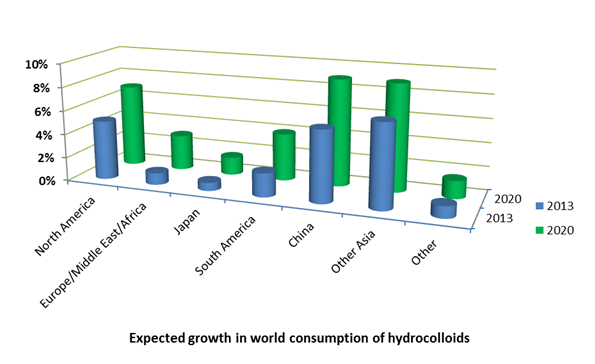
Share of Non-Alcoholic Beverage Market by Volume (CANADA)
The majority of tea and coffee processing takes place in Ontario (41 establishments), Quebec (34 establishments) and British Columbia (26 establishments), followed by Alberta (9 establishments), Nova Scotia (3 establishments), Manitoba (2 establishments), and New Brunswick (2 establishments). Statistics Canada's Business Patterns Database indicates that in 2008 production facilities ranged in size from small one- or two-person operations to large plants employing up to 500 people. Four of the six major coffee and tea manufacturers (sales over $100 million) are foreign-owned.

There is a strong multinational presence in the coffee industry with some firms offering both tea and coffee products. Multinational enterprises (MNEs) have contributed to the growth of both imports and exports as their Canadian plants have focussed on areas where they have competitive advantages on a regional basis in both the U.S. and Canadian markets or in production flexibility. Canadian plants produce commonly known brands for the Canadian or North American markets, while benefitting from the marketing strengths of their parent MNE firms. They often have product mandates for "mainstream" products, as well as for value-added short-run production of less popular lines. Such mandates can build exports. At the same time, the need to fill product offerings in the Canadian market can increase imports.
Similarly, many small and medium-sized enterprises (SMEs) have rationalized and focussed their operations to remain competitive. These strategies involve the development of specialty products for market niches, such as organic or fairly traded products. In some cases SMEs also co-pack brand name products for MNEs, produce private-label products, or make products for use by foodservice operations such as coffee-themed restaurants.
Employment in Food sectors in Canada
The food processing sector is one of the largest manufacturing sectors in Ontario and in Canada. Toronto is a major decision-making centre for the food industry in Canada, with half of Canada's top ranked food and beverage manufacturers being headquartered in the city.
The food and beverage cluster has long been a major component of Toronto CMA's economy. It is the second largest manufacturing sub-sector in the Toronto CMA. The 1,149 employment establishments located in the Toronto CMA employ more than 51,000 people. Employment in this sector has increased at a rate of 0.4% annually during 2003-2013.
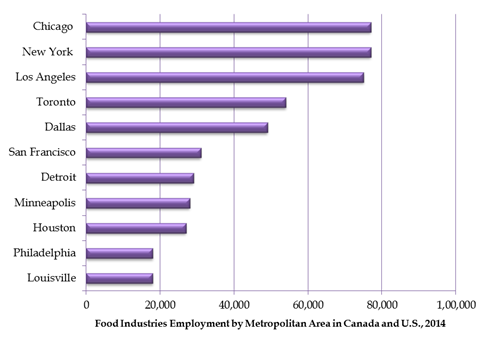
Toronto Food Processing Industry
Core food industry activities include food processing, warehousing and distribution, retailing and food services. The Toronto food industry has a multiplier effect that generates growth in related industries servicing the cluster. These include packaging, design, the production of food industry equipment, biotechnology and specialized storage and transportation (i.e. refrigerated).
Bakeries are the largest single type of food processing plant, and this has resulted in diverse, high quality products in this sub-sector. Meat processing is the next largest sub-sector, followed by beverages.
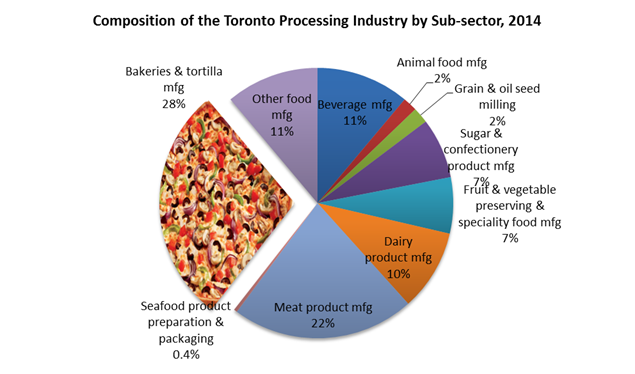
Organisations funding food research and food industries:
Ministry of Food Processing Industries, INDIA-The Ministry of Food Processing Industries, the Nodal Ministry of the Government of India for the sector has a clear goal of attaining these objectives by facilitating and acting as a catalyst to attract quality investments from within India and abroad into this sector with the aim of making food processing a national initiative.
Budget Allocation: 487 crore
Ashoka Innovators for the Public (United States/International) – Ashoka supports a network of 3,000 social entrepreneurs across the world. By providing financing and start-up capital, Ashoka has been transforming the landscape of social innovation since 1980. It is encouraging fundamental transformation of the food chain to full nutrition with an initiative linking human wellbeing, agriculture, and the environment.
Australian International Food Security Centre (AIFSC) (Australia) – The AIFSC is a non-profit organization that works to promote agricultural innovation and attract investment to agricultural development projects. Aiming to build capacity for farming initiatives worldwide, AIFSC focuses on achieving specific goals like improving nutrition, connecting researchers with industry, and enhancing supply chain systems to allow farmers to bring their products to market.
Barilla Center for Food & Nutrition (BCFN) (Italy) – The Barilla Center for Food & Nutrition works to promote science and research for combating hunger and malnutrition worldwide. Using knowledge gleaned from research projects around the world, BCFN seeks to take innovative ideas for tackling food insecurity and translate them into effective policy recommendations for governments around the world. Since their inception, they have released original research on a wide range of topics including global obesity and sustainable agriculture.
Bioversity International (International) – Bioversity International is a research and development organization aimed at supporting smallholder farmers in the developing world through sustainable agriculture and conservation. Bioversity International focuses on rain-fed farming systems, managed by smallholder farmers, in communities where large scale agriculture is not possible.
Calacea Farm, Not For Sale (NFS) (Romania) - NFS is an organization working to fight modern-day slavery around the world. In Romania, NFS works with their partner Mariana, operating an organic farm, which accommodates survivors of human trafficking. Just outside Timișoara, the farm offers individuals in recovery opportunities for health care, education, life skill training and new employment, to restore dignity and help re-build their future. Last year, NFS helped construct a building to house up to 50 additional farm workers, a workshop space to make jam, milk, and cheese, and two greenhouses to produce fruits and vegetables.
Center for Food Safety (United States) - The Center for Food Safety is a non-profit advocacy organization that promotes food systems that are safe, sustainable, and environmentally sound. Using a legal team, original research on agriculture, and grassroots organizing, CFS’ mission is to protect human health and the environment, achieved through careful monitoring of the agricultural industry for violations of food safety and environmental laws.
The Center for Studies and Development of Cambodian Agriculture (CEDAC) (Cambodia) - In partnership with Farmer and Nature Net (FNN), CEDAC has worked to promote the System of Rice Intensification (SRI), which has been shown to increase yields and improve soil fertility while reducing the use of chemicals and maintaining local ownership of seeds. CEDAC supports several other agricultural innovations and techniques including Ecological Chicken Raising (ECR), pig raising, home gardening, aquaculture, composting, and multi-purpose farming.
Chicago Council on Global Affairs Global Agricultural Development Initiative (United States/International) - The Global Agricultural Development Initiative seeks to inform the development of U.S. policy on global agricultural development and food security by raising awareness and providing resources, information, and policy analysis to the U.S. Administration, Congress, and interested experts and organizations.
Christensen Fund (United States) – The Christensen Fund is a philanthropic organization dedicated to promoting biological and cultural diversity, making grants to organizations that work in fields like conservation science, visual arts, and education. The Fund is particularly noted for its work on agrobiodiversity and food sovereignty, in which it provides resources for indigenous and local farming communities to protect and enhance local food systems.
Consultative Group on International Agricultural Research (CGIAR) (International) - The Consultative Group on International Agricultural Research is a network of research organizations that are looking to promote and support global food security. With 15 centers around the globe, CGIAR helps to share knowledge and advance research on rural poverty, health and nutrition, and management of natural resources.
EARTH University (Costa Rica) – EARTH University is an international non-profit undergraduate institution based in Costa Rica focused on agricultural sciences and natural resource management. EARTH’s mission is to “prepare leaders with ethical values to contribute to the sustainable development of the tropics and to construct a prosperous and just society.”
Ecoagriculture Partners (United States/International) – Ecoagriculture Partners supports agricultural communities in managing their landscapes by using ecoagriculture in order to enhance rural livelihoods, conserve biodiversity, and produce food and fiber in environmentally sustainable ways.
ECOVA MALI (Mali) – Founded by former Peace Corps volunteers, Cynthia Hellmann and Gregory Flatt, ECOVA MALI works with Malian farmers to teach other farmers about sustainable agriculture methods. They also offer micro-financing and small-scale grants so that farmers can invest in the sustainability, both social and environmental, of their operations.
Farm Labor Organizing Committee (United States) – Founded in 1967, FLOC was initially organized by Baldemar Velasquez, a migrant worker who sought to improve the working conditions of others like him by creating a mobile organizing base that could move along with workers as the seasons changed. Now, FLOC has over 20,000 members and works in both the United States and Mexico.
Feeding the 5000 (United Kingdom/International) – Tristram Stuart’s initiative is organizing the world to prevent "wonky" fruits, vegetables, and other food from being wasted. Feeding the 5000 encourages farmers to participate in the “gleaning movement” – where volunteers collect unattractive produce that would otherwise be wasted for consumption.
Food & Water Watch (United States) - Founded on the belief that people have a fundamental right to trust the safety of the products they eat and drink, Food and Water Watch is a nonprofit organization that works to make food and water resources accessible and sustainable. They work to monitor food production and clean water systems, track the environmental quality of oceans, keep watch over U.S. corporate influence on public policy, and hold policymakers accountable for policies that pollute.
Food First: The Institute for Food and Development Policy (United States/International) - Food First is a research and advocacy organization that seeks to eliminate the injustices that cause hunger worldwide, working with social movements to amplify their voices and boost their efforts toward food justice and sovereignty. Believing that change happens from the ground up, Food First supports an agricultural approach that moves away from transnational agri-food industry to one focused primarily on farmers and communities.
Food Mythbusters (United States) – Food Mythbusters is a campaign of the Real Food Media Project that seeks to dispel misconceptions about food production and promote reforms in industrial agriculture, unfair labor practices, and food advertising, among other issues. In order to tell “the real story of our food,” Food Mythbusters utilizes video series, grassroots events, and interactive digital content.
Global Partnerships for Afghanistan (GPFA) (Afghanistan) – GFPA launched the Women Working Together collaborative initiative in 2005 in order to increase the quality of life of women in Afghanistan. GPFA focuses on programming that enhances female-run farms and orchards, teaching food preservation, greenhouse operation, and other practices.
Good Planet Foundation (France) – The GoodPlanet Foundation seeks to educate the public about the importance of environmental protection. The organization utilizes the power of photographs, posters, websites, films, and other visual media to spread information. For example, GoodPlanet has lead successful campaigns on the awareness of ocean and forest conservation, respectively.
Growing Power (United States) – Growing Power, Inc. is an American non-profit organization and land trust that seeks “to grow food, minds, and community” through a network of farms, training sites, and community food systems that provide access to food for all people. Growing Power also runs a number of youth programs and collaborates with various organizations, including Michelle Obama’s “Let’s Move!” campaign. This year, Growing Power celebrates its 20th anniversary.
Heifer International (United States/International) - Heifer International is a non-profit organization that seeks to end hunger and poverty by providing communities in need with livestock and other animals that help them to build local, self-sufficient agricultural systems. It also offers a variety of resources that help impoverished farmers create sustainable sources of income, providing them with research on effective grazing methods, optimal animal well-being, and the creation of local networks that farmers can use to share resources with one another.
Institute for Agriculture and Trade Policy (IATP) (United States/International) – IATP is a research and advocacy organization working to promote fair and sustainable food, farm, and trade systems around the world. Created in response to the American family farm crisis, IATP initially sought to document the failed policies that had led to prices dropping below the cost of production, and put many family farmers out of business. Now, IATP works with organizations worldwide to analyze the impact of global trade agreements, develop clean energy models, and stop the excessive use of antibiotics in agriculture and aquaculture.
International Fund for Agricultural Development (IFAD) (International) – This United Nations-supported financial institution is on a mission to eradicate rural poverty in developing countries. IFAD helps empower the rural poor by providing them with the resources they need to invest in themselves and increase their incomes.
L.I.F.E. (Lasting Impact for Ethiopia) (Ethiopia) – This nonprofit organization is educating and empowering Ethiopian youth. In January 2012, a school for Ethiopian youth was established in the village of Nazerate, with a curriculum emphasizing literacy, agriculture, health, and sustainability.
Latin American and Caribbean Center for Rural Women (Enlac) (Latin American and Caribbean Regions) – The Latin American and Caribbean Center for Rural Women (Enlac in Spanish) serves as an organizing voice for marginalized, rural women. Enlac calls for policies that give Latin American and Caribbean women equal access to land rights, raise awareness about violence against female agriculture workers, boost access to clean water, and conserve native seeds.
Millennium Institute (MI) (United States/International) – Millennium Institute is an independent nonprofit with the goal of promoting systems literacy and dynamic modeling tools in order to achieve sustainable development globally. MI works to achieve awareness through public education and strategic partnerships centered around interdependence and sustainability.
One Acre Fund (United States/Sub-Saharan Africa) – The One Acre Fund provides farmers in sub-Saharan Africa with the tools they need to successfully operate their plots, such as seeds and fertilizers, credit, access to markets, and educational programs on farming techniques. These services are provided at a fee to the farmers who participate.
ONE Campaign (International) – The ONE Campaign is an international advocacy group aimed at alleviating extreme poverty and preventable disease through public awareness.
Oxfam International (International) – Through a wide variety of approaches – ranging from long-term campaigns, such as their Behind the Brands Campaign to secure labor rights for employees in the cocoa industry, to immediate emergency support – Oxfam has taken measures to bring an end to global poverty.
Restaurant Opportunities Centers United (ROC-United) (United States) –ROC-United is a labor advocacy organization that focuses specifically on the American restaurant workforce. Founded by restaurant workers who survived the 9/11 attacks to help other displaced workers, ROC-United primarily advocates for better wages and working conditions, seeking to act as a champion for members of an industry that is less than one percent unionized.
The Savory Institute (United States/International) – This organization, lead by Allan Savory, the “father of holistic management,” uses livestock in sustainable ways to restore grasslands. The Savory Institute teams up with private investors to purchase ranch real estate for restoration.
Slow Food International (Italy/International) - Slow Food International is an international non-profit organization with supporters in 150 countries that emphasizes the importance of good food and the factors that make it possible, including biodiversity, culture, and knowledge. Created to respond to an increasingly “fast food” world, Slow Food seeks to preserve local traditions, enhance people’s understanding of food and where it comes from, and comprehend the impact that our food choices make on the world.
Soil Association (United Kingdom) – The Soil Association is a U.K.-based charity that campaigns for humane and healthful food through sustainable farming and land use. Founded in 1946, Soil Association was an early player in the movement to identify links between farming practices and the health of humans, plants, animals, and ecosystems. Now, the organization works closely with communities to create and inspire trust in organic farming methods and the food that they produce.
Songtaab-Yalgré Association (SYA) (Burkina Faso) - SYA brings together women from across Burkina Faso to produce shea nuts, using the collective to simultaneously improve their literacy and their working conditions. As a locally-sourced crop, shea nuts were chosen for their potential to allow the women harvesting them to achieve a higher level of economic self-sufficiency, and empower them to become independent in their society. Workers at SYA distribute profits equally and set aside a percentage to fund community development projects as well.
Stone Barns Center for Food and Agriculture (United States) – The Stone Barns Center is a non-profit organization that aims to create a food system that is healthy, sustainable, and which benefits all people. On an 80-acre farm just outside of New York City, the Center offers cooking classes for all ages, organizes a seasonal market, and operates two food venues. All profits support farm operations and community education programs, and the Center encourages anyone to visit and see the benefits of a sustainable farm.
United Nations Food and Agriculture Organization (FAO) (International) – The Food and Agriculture Organization is the United Nations’ international agency overseeing global food security and agriculture. Among their many research areas, FAO’s main activities include knowledge-sharing among member nations, making information about food and agriculture available for all people, supporting policies to reduce malnutrition and other illnesses worldwide, rallying the international community to promote effective strategies for agricultural development, and conducting research to better understand the complex issues that face the global food system.
WinRock (United States/International) – WinRock works with marginalized people all over the world to provide them with the skills and resources they need to bring themselves out of poverty. WinRock’s projects include, among others, empowering women and youth, and teaching environmentally responsible farming methods.
World Food Programme (WFP) (International) – The World Food Programme is an international anti-hunger organization within the United Nations that collects and distributes food assistance to populations in need. As the world’s largest organization working to combat hunger, WFP distributes food to over 90 million people annually, mainly delivering assistance to children, refugees, people in emergency situations (such as the 2010 earthquake in Haiti) and the rural poor.
World Vegetable Center (AVRDC) (Taiwan/International) – AVRDC is an international non-profit organization dedicated to reducing poverty and malnutrition in the developing world by increasing agricultural production and access to a variety of vegetables, providing essential micronutrients for populations in need. The Center works with both private and public sector partners to strike an effective balance between necessary research for new technologies and development to employ those technologies effectively.
Universities offering Food science study in Canada
Alberta University
British Columbia University
Greater Vancouver University
Manitoba University
Newfoundland University
Nova Scotia University
Ontario University
Quebec University
Saskatchewan University
Graduate University
Canada University
Alberta University
British Columbia University
Greater Vancouver University
Newfoundland University
Nova Scotia University
Ontario University
Quebec University
Canadian Food sector leaders
Maple Leaf Foods Inc., CA$ 22.91
Campbell Soup Company Limited
Cargill Limited
Fiera Foods Company
George Weston Limited
Kraft Canada Inc.
Unilever Canada Limited
Wrigley Canada
Olymel
Red Deer
Cornwall
Lakeside Packers
Lilydale Foods
Olymel
Sunrise Poultry
McCain Foods Limited
George Weston Limited , CA$ 109.24
Saputo Inc., CA$ 30.48
La Coop fédérée
Molson Canada, US$ 83.67
Nestlé Canada Inc, CHF 72.50
Cott Corporation, CA$ 15.32
Parmalat Dairy & Bakery Inc.
Agropur Cooperative Agro-Alimentaire
Pepsi-QTG Canada
General Mills Canada Corporation
FPI Limited
Export Packers Company Limited
Campbell Company of Canada
Lilydale Co-operative Limited
Maple Lodge Farms Ltd.
Vincor International Inc.
SunOpta Inc.
Breton Foods Canada Inc.
Barry Callebaut Canada Inc.
Clearwater Seafoods Limited Partnership
Gay Lea Foods Co-operative Ltd.
Van Houtte Inc.
Carriere Foods Inc.
Food Hydrocolloids Market (2015-2020)
The global market for hydrocolloids is expected to reach a value of US$ 8,000 million by 2020 with a growing CAGR of 5.7%.
The market is largely driven by increased Research & Development and innovations in hydrocolloids. Consumer preference for natural ingredients and the varied applications of hydrocolloids in the food and beverage industry are some of the reasons for the uptick in demand. The changing consumer demographics in terms of lifestyle changes and growing working population resulting in consumer demand for convenience and processed foods, especially among the emerging nations. This is seen as an opportunity for the manufacturers to adopt hydrocolloids in their manufacturing process. However, the market is mainly constrained by the demand - supply imbalances. Seasonal changes cause volatility in the raw material pricing, thus raising costs for manufacturers. In spite of restrains, the market sees huge potential for growth.
The market is segmented based on type which includes gelatine, xanthan gum, starch, carrageenan and others. Majority of the hydrocolloids require raw materials to be sourced from seaweeds, plants, animals and microorganisms. Hydrocolloids are used for a wide range of applications, such as bakery, confectionery, meat & poultry, beverage, and dairy& frozen products. Bakery and Confectionary dominate the market share for hydrocolloids.
Regional classification:
Based on regions the market is segmented as North America, Europe, Asia-pacific, South America and Africa. In 2013, North America was the largest market for hydrocolloids followed by Europe. Asia-Pacific is the fastest growing region followed by Europe for the period 2015-2020. Changing lifestyles of consumers and increasing awareness on nutritional food is driving the hydrocolloids market in developing countries, such as India and China.
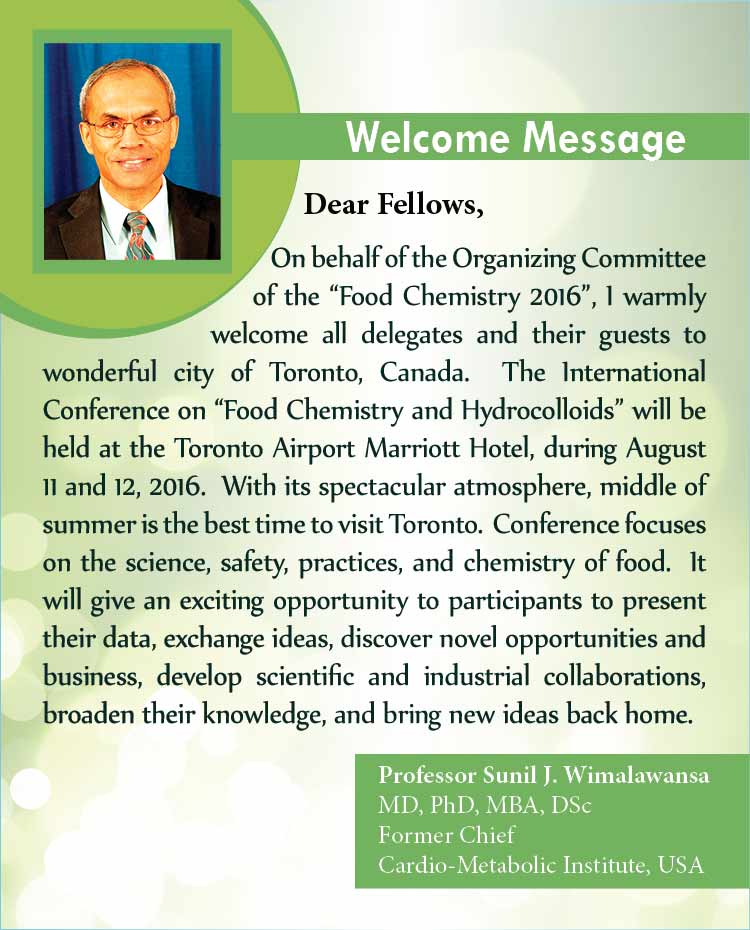
Conference Highlights
- Chemistry of Food
- Functionality and Behaviour of Hydrocolloids
- Food Flavor Chemistry
- Hydrophilic Colloids in Food Industry
- Cereal Chemistry and Sea Food Chemistry
- Chemistry behind Meat and Poultry Processing
- Rheology and Kinetics of Chemical Reaction in Food
- Food Storage and Preservation
- Food, Nutrition and Health
- Food Structure and Functionality
- Role of Bioactive Constituents
- Processing,Fortification and Packaging of Food
- Recent Advancement in Food Science and Food Business
- Equipments and Techniques
- Food Dairy: Science, Research & Sustainability
- Entrepreneurs Investment Meet
To share your views and research, please click here to register for the Conference.
To Collaborate Scientific Professionals around the World
| Conference Date | August 11-12, 2016 | ||
| Sponsors & Exhibitors |
|
||
| Speaker Opportunity Closed | Day 1 | Day 2 | |
| Poster Opportunity Closed | Click Here to View | ||
Useful Links
Special Issues
All accepted abstracts will be published in respective Our International Journals.
- Journal Food Processing & Technology
- Journal of Nutrition & Food Sciences
- Journal of Food and Nutritional Disorders
Abstracts will be provided with Digital Object Identifier by







